In this article, I will cover the Best Temples in Bhutan, highlighting some of the most beautiful and sacred sites in the country and ranging from the stunning and cliffside situated Paro Taktsang to the Paro Dzong.
- Key Points & Best Temples In Bhutan
- 10 Best Temples In Bhutan
- 1. Paro Taktsang (Tiger’s Nest Monastery)
- 2. Kyichu Lhakhang
- 3. Chimi Lhakhang
- 4. Punakha Dzong (Pungthang Dewachen Phodrang)
- 5. Tashichho Dzong
- 6. Jambay Lhakhang
- 7. Kurjey Lhakhang
- 8. Tamzhing Lhündrup Monastery
- 9. Lhuentse Dzong and Temples
- 10. Rinpung Dzong
- Conclsuion
- FAQ
I will cover the more ancient and beautiful Kyichu Lhakhang and the more modern and grand Punakha Dzong.
Each of these demonstrates the rich heritage of Buddhism in Bhutan and the country’s beautiful architecture.
Key Points & Best Temples In Bhutan
| Place | Key Points |
|---|---|
| Paro Taktsang (Tiger’s Nest Monastery) | Iconic cliffside monastery, 3,000 m above sea level, associated with Guru Rinpoche; trekking destination with stunning views. |
| Kyichu Lhakhang | One of Bhutan’s oldest temples (7th century), holds sacred statues, known for spiritual significance and festivals. |
| Chimi Lhakhang | Known as the “Fertility Temple,” dedicated to Drukpa Kunley (Divine Madman), attracts couples seeking blessings for children. |
| Punakha Dzong (Pungthang Dewachen Phodrang) | Historic fortress and administrative center, sits at the confluence of two rivers, stunning Bhutanese architecture. |
| Tashichho Dzong | Seat of Bhutanese government and monastic body, grand fortress-monastery in Thimphu, hosts coronations and religious events. |
| Jambay Lhakhang | Ancient temple (7th century), associated with Buddhist festivals, significant for local pilgrimages. |
| Kurjey Lhakhang | Houses the rock imprint of Guru Rinpoche, important meditation site, center of religious ceremonies. |
| Tamzhing Lhündrup Monastery | Historic monastery in Bumthang, known for masked dances (Cham), founded by Pema Lingpa. |
| Lhuentse Dzong and Temples | Eastern Bhutan fortress with intricate architecture, preserves cultural heritage and ancient artifacts. |
| Rinpung Dzong | Fortified monastery in Paro, combines administrative and religious functions, famous for Paro Tsechu festival. |
10 Best Temples In Bhutan
1. Paro Taktsang (Tiger’s Nest Monastery)
Paro Taktsang, more commonly referred to as Tiger’s Nest Monastery, is one of the most photographed and recognizable Buddhist sites in Bhutan.
It is a staggering 3,000 meters above the Paro Valley, and built around the cave of meditation of the revered Guru Rinpoche.

It was built in 1692 and represents the start of the age of Buddhism in the Land of the Thunder Dragon.
The stunningly terrace and stair-bordered temples that comprise the monastery entice climbers who are awed by the breathtaking display of architecture. At the same time, valley pilgrims search for the monastery’s spiritual essence.
| Famous Things |
|---|
| The cliffside monastery is perched 3,000 meters above Paro Valley |
| Sacred cave where Guru Rinpoche meditated |
| Iconic Bhutanese architecture with prayer flags along the trail |
| Popular trekking and pilgrimage site |
| Stunning panoramic views of the valley below |
2. Kyichu Lhakhang
Kyichu Lhakhang, located in Paro, is one of Bhutan’s oldest and most revered temples, dating back to the 7th century. It was built under the reign of King Songtsen Gampo to subdue evil spirits and spread Buddhism.
The temple houses sacred statues and thangkas and is considered highly auspicious for pilgrims. Visitors are drawn to its serene atmosphere, intricate murals, and historical significance.

Festivals and rituals held here attract devotees from across the country. Surrounded by lush greenery and mountain views, Kyichu Lhakhang is not only a spiritual hub but also a place that preserves Bhutanese cultural and architectural heritage.
| Famous Things |
|---|
| One of Bhutan’s oldest temples, built in 7th century |
| Sacred statues and ancient murals |
| Spiritual significance for local devotees |
| Hosting religious festivals and rituals |
| Known as a site for meditation and blessings |
3. Chimi Lhakhang
Chimi Lhakhang is popularly called the Fertility Temple. It is located in Punakha District and is dedicated to Drukpa Kunley, the “Divine Madman,” known for his unconventional and outlandish methods of teaching Buddhism.
This temple is also the center of fertility worship, as it is frequented and visited by childless couples who come to seek blessings.
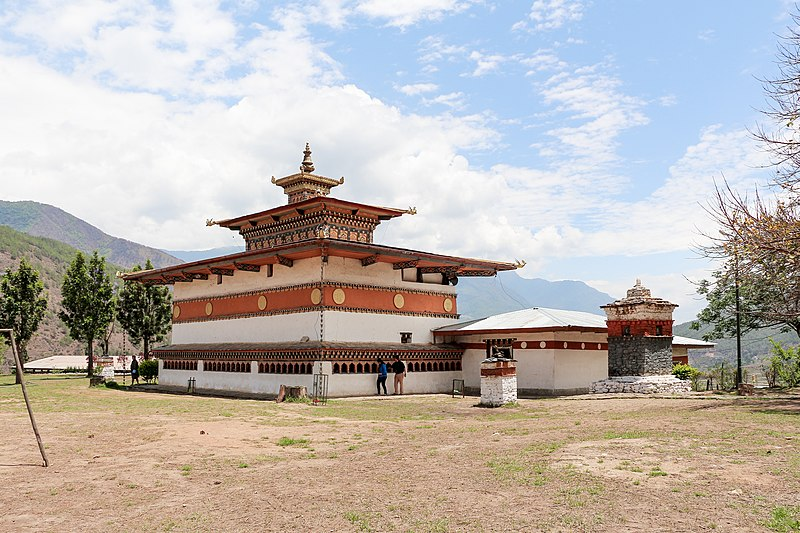
It was constructed in 1499 and has a magnificent white structure with a statue of Kunley in the center. Pilgrims perform rituals with phallic symbols, which they believe ward off evil and attract good luck.
Rice fields surround Chimi Lhakhang, and the scenic landscapes offer visitors a unique and spiritual experience of Bhutanese culture, filled with humor, devotion, and local traditions.
| Famous Things |
|---|
| Known as the “Fertility Temple” |
| Dedicated to Drukpa Kunley, the Divine Madman |
| Rituals involving phallic symbols for fertility and protection |
| Attracts couples seeking blessings for children |
| Surrounded by scenic rice fields and landscapes |
4. Punakha Dzong (Pungthang Dewachen Phodrang)
Punakha Dzong, or Pungthang Dewachen Phodrang, is another remarkable Buddhist fortress-monastery located at the meeting of the Pho Chhu and Mo Chhu rivers.
Built in 1637 by Zhabdrung Ngawang Namgyal, this dzong was the administrative center for the Je Khenpo and monks’ winter residence.

In addition to the outstanding dzong for western Bhutanese architecture, remarkable intricate wooden art carvings, elaborate courtyards, and intricate wooden art representations, the Dzong is a spiritual and historical treasure.
It is the only location with the annual Punakha Tshechu and the sacred festival of Punakha Drubchen.
The monument exemplifies Bhutan’s culture with its rich and vast rivers, beautiful and tranquil fortification and meditation center, and the surrounding lush and green valley.
| Famous Things |
|---|
| Historic fortress at the confluence of Pho Chhu and Mo Chhu rivers |
| Grand Bhutanese architecture with elaborate woodwork |
| Winter residence for monks and Je Khenpo |
| Hosting Punakha Tsechu and Punakha Drubchen festivals |
| Scenic riverside location with lush valley views |
5. Tashichho Dzong
Tashichho Dzong is located in the capital of Bhutan, Thimphu. It is the seat of the government and the central monastic body.
The Dzong was built in 1641 and rebuilt in the 1960s. It was the first building that incorporated the monumental style of Bhutanese architecture, with its whitewashed walls, golden roofs, and courtyard.
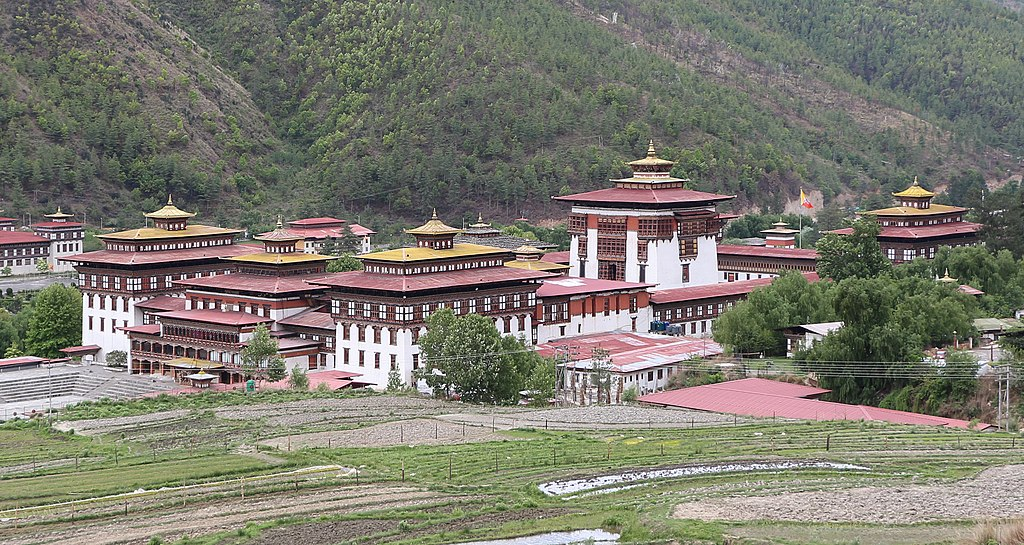
Tashichho Dzong is of immense significance, with its throne room and administrative offices built there, as well as several temples. It is the religious and political focus of the country.
The religious festival, Thimphu Tsechu, is one of the many vivid festivals celebrated in the Dzong, where monks perform religious dances.
The Dzong is a national symbol for Bhutan, with magnificent murals and a rich history. The Dzong is a representation of the political and religious icon of the Bhutanese people.
| Famous Things |
|---|
| Seat of the Bhutanese government and cthe entral monastic body |
| Grand fortress-monastery with golden roofs and white walls |
| Throne room and administrative offices inside |
| Vibrant festivals like Thimphu Tsechu |
| Architectural and historical symbol of Bhutanese governance |
6. Jambay Lhakhang
As one of the oldest temples in Bhutan, Jambay Lhakhang is located in Bumthang, dating covering to the 7th century under King Songtsen Gampo. Aside from the spiritual importance, this temple is also well known for the traditional festivities that it celebrates.
This includes the Jambay Lakhang Drup, which celebrates with ritualistic masked dances. The temple Garner’s is in line for worship in immense proportions across Bhutan, as it holds sacred images and relics.
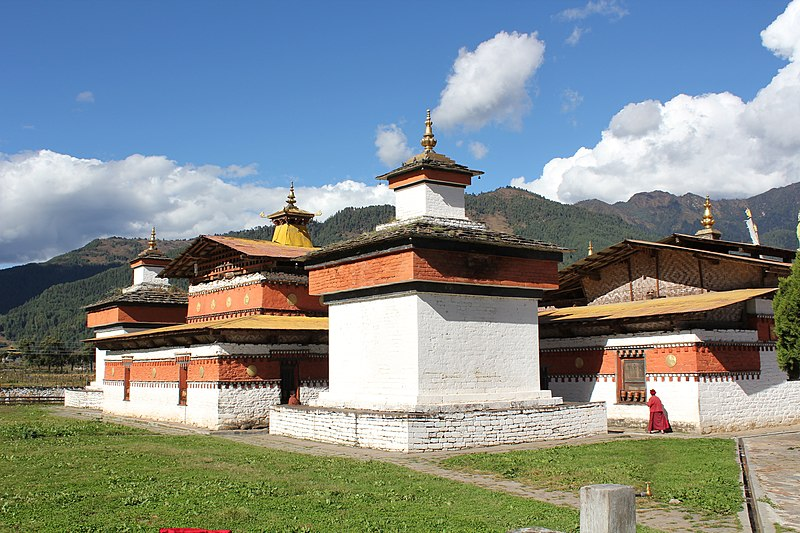
Assembled in the Indian style of and Bhutanese architecture, the temple also holds Quint courtyards and temples.
The Jambay Lhakhna g temple is geographically located in and surrounded the mountains Lhakhang and the green resembles the massive devotion of history and the Lhakhnag s mountains and the green resembles.
| Famous Things |
|---|
| One of Bhutan’s oldest temples, built in 7th century |
| Hosts traditional festivals and masked dances (Drup) |
| Houses sacred images and relics |
| Pilgrimage site for devotees from all over Bhutan |
| Serene courtyards surrounded by mountains and valleys |
7. Kurjey Lhakhang
Located in Bumthang, it is also home to the revered pilgrimage site of Kurjey Lhakhang. This complex consists of three temples and monasteries, which, after veneration in the temple, are visited to receive blessings and gifts.
Continuing to be a centre point of the religious offering and spiritual festivals in the nation, the Kurjey Lhakhang is embedded in the heart of the Bonpo’s spirituality.
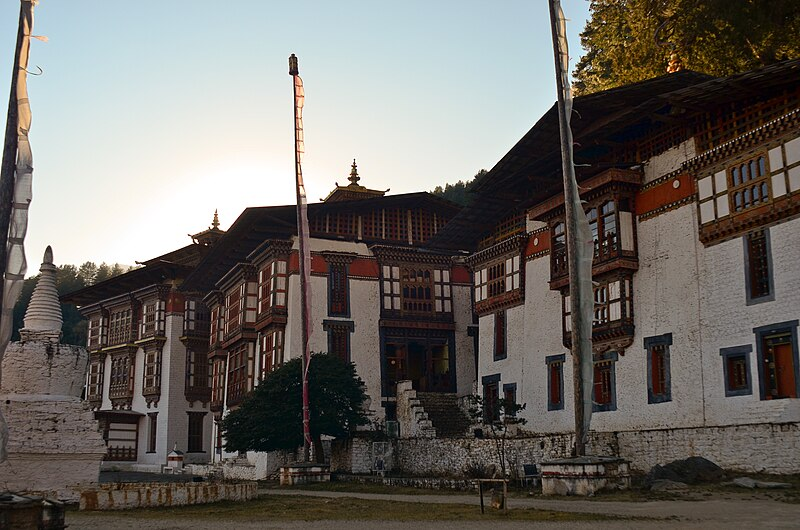
Contemplation and prayer surrounding the complex are bound to the integrative and picturesque atmospheres of the Buddhist nation.
Each sacred Larsen temple is a testament to the surrounding spirituality. Each sculptured and venerated temple is a site of pilgrimage and Kurjey Lhakhang is every bit Kurjey Lhakhang requires to fulfil every visit to the nation.
| Famous Things |
|---|
| Houses the rock imprint of Guru Rinpoche |
| Composed of three temples within the complex |
| Center for religious ceremonies and festivals |
| Pilgrimage site for meditation and spiritual reflection |
| Scenic surroundings with serene landscapes |
8. Tamzhing Lhündrup Monastery
In the 15th century, the famous treasure revealer Pema Lingpa established the Tamzhing Lhündrup Monastery, which thrives in the Bumthang Valley.
Tamzhing Lhündrup Monastery still retains importance in the Nyingma School of Transcendent Wisdom as it contains ancient manuscripts, sacred relics, and unique wall paintings.
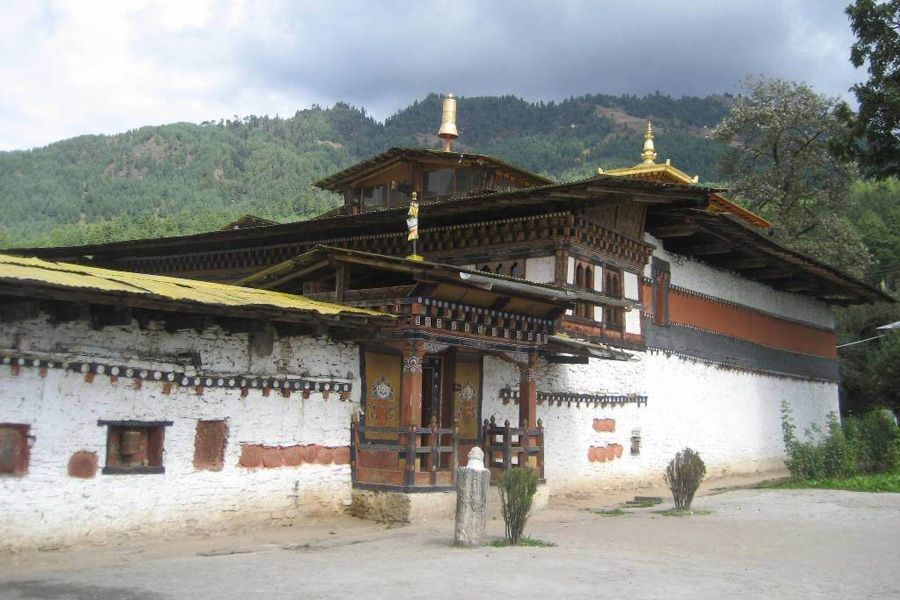
The Monastery is particularly noted for its Cham dances and festivals, to which Tamzhing Lhündrup Monastery is considered the cultural and spiritual treasure of the country.
With its vibrant monastic life, Tamzhing Lhündrup Monastery is one of the pilgrims and tourists understand the ascetic life of Bhutan. The Monastery is needed to experience the spiritual and historical essence of Bhutan.
| Famous Things |
|---|
| Founded by treasure revealer Pema Lingpa in 15th century |
| Collection of ancient manuscripts and sacred relics |
| Renowned for Cham (masked) dances during festivals |
| Preserves Nyingma Buddhist traditions and rituals |
| Historic and spiritual center in Bumthang Valley |
9. Lhuentse Dzong and Temples
Lhuentse Dzong, located in eastern Bhutan, is a historic fortress-monastery perched on a hill overlooking the Kuri Chhu river.
Built in the 17th century, it preserves ancient Bhutanese architecture, murals, and sacred relics.
The dzong serves as a religious, administrative, and cultural center for the region, hosting ceremonies and festivals.
Its temples within the complex are highly revered, reflecting the spiritual traditions of eastern Bhutan.
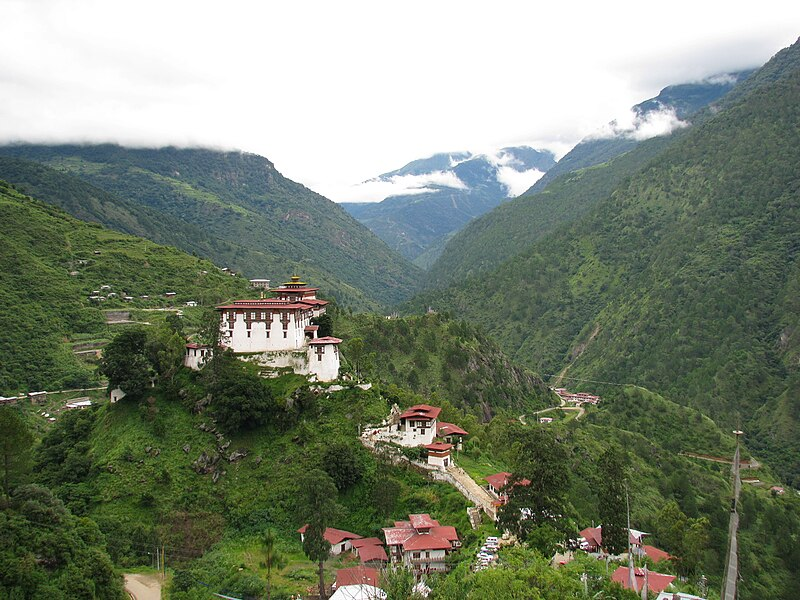
Surrounded by picturesque landscapes and traditional villages, Lhuentse Dzong offers visitors a glimpse into Bhutan’s rich heritage
blending religious devotion, architectural brilliance, and historical significance in a serene and inspiring setting.
| Famous Things |
|---|
| 17th-century fortress-monastery in eastern Bhutan |
| Houses ancient relics and intricate murals |
| Religious, administrative, and cultural hub |
| Scenic location overlooking Kuri Chhu river |
| Preservation of eastern Bhutanese heritage and architecture |
10. Rinpung Dzong
Rinpung Dzong is a fortress-monastery that was built in 1644 by Zhabdrung Ngawang Namgyal in Paro, Bhutan.
It was built to be an administrative center and a place of religion and has large open courtyards, detailed wooden carvings, and massive white walls.
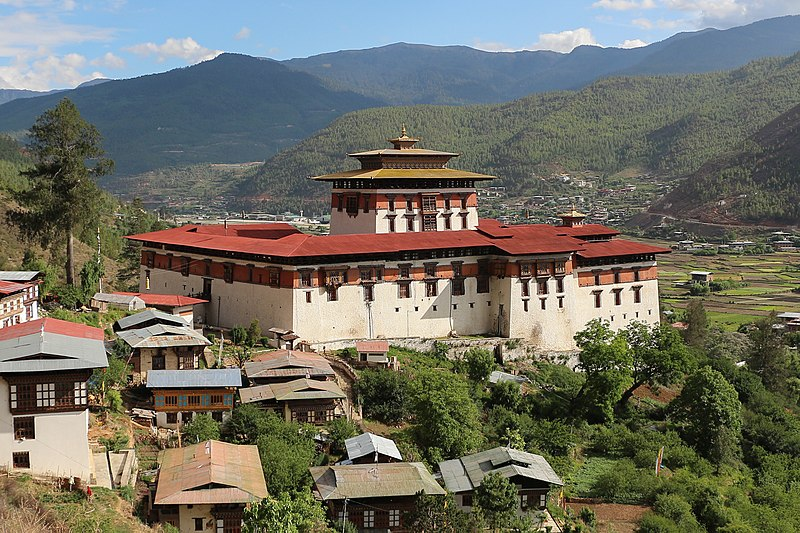
It is home to the Paro Tsechu, which is one of the largest and most colorful festivals in Bhutan, where Buddhists monks perform sacred dances.
The Dzong is built to oversee the Paro valley, and is one of the best reflections of excellence in Bhutanese architecture.
| Famous Things |
|---|
| Fortress-monastery built in 1644 by Zhabdrung Ngawang Namgyal |
| Massive courtyards and elaborate Bhutanese architecture |
| Hosts Paro Tsechu, one of Bhutan’s largest festivals |
| Administrative and religious center in Paro valley |
| Offers panoramic views and reflects Bhutanese cultural heritage |
Conclsuion
In summary, Bhutan Temple and Dzogs are a product of herelleotography, a magnificent tribute to Bhutan’s spirituality, culture, and sheltering topography.
From the scenic heights of the Paro Taktsang to the cliffside peace of Kyclhi, the enthronement of peace and culture, along with reverence, is to be felt every day and sought in a peaceful visit to the trough passages of the dzongs.
FAQ
Which is the most famous temple in Bhutan?
Paro Taktsang, also known as Tiger’s Nest Monastery, is the most famous temple in Bhutan.
What makes Paro Taktsang special?
It’s perched on a cliff and believed to be the meditation site of Guru Rinpoche.
Which temple is known for fertility blessings?
Chimi Lhakhang, the Fertility Temple, is visited by couples seeking blessings for children.
Where is the oldest temple in Bhutan?
Kyichu Lhakhang in Paro is one of Bhutan’s oldest and most sacred temples.
What is Punakha Dzong famous for?
It’s known for its stunning riverside location and as a major religious and historical fortress.
